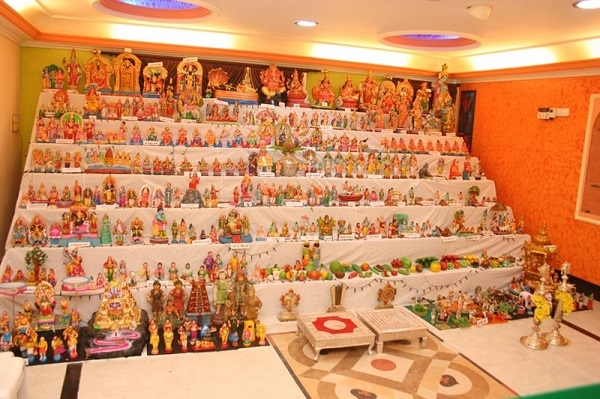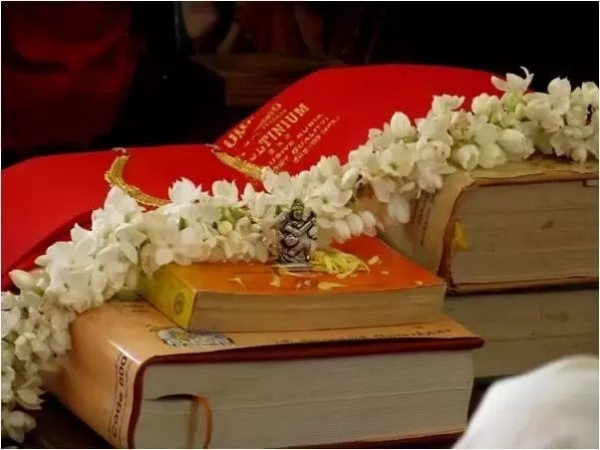Golu, the festival of dolls - South India's Navratri!
Total Views | 2838
-Anjali Ankad
India is a diverse country. It presents endless varieties of religious and cultural patterns. The diversity is also reflected when it comes to celebrating the festivals. One such festival is the Navratri that brings loads of joy and happiness to one's life. It is celebrated in different ways across the country for 9 days, dedicated to different avatars of Goddess Durga. It is celebrated as the Durga Puja festival in West Bengal; it is the main festival in Gujarat; is marked by the numerous Ramlila events in North India. Similarly, there is another celebration that takes place down south, called Bommai Kolu in Tamil, Bommala Koluvu in Telugu, and Gombe Habba in Kannada, which means Divine Presence, Court of Toys and Doll Festival respectively.

Golu is mainly celebrated in Tamil Nadu and parts of Andhra Pradesh, Karnataka and Kerala. It is celebrated in these different South Indian states but the pattern remains the same with some slight changes. The celebrations begin with setting wooden steps, tiers, rack, or Padis ranging from 3 to 11 (usually 3, 5, 7, 9, or 11). Following this, the padis is covered with fabric it is then adorned with various dolls, figurines mainly of the Goddesses Saraswati, Parvati, and Laxmi according to their size, with the deities at the top. The whole decoration of dolls is called Kolu. In Tamil Nadu, a special dish 'sundal' is prepared on all these 9 days. This delicious dish is made out of groundnut, peas, and several pulses.

Kolu
As any other Hindu festival celebrated in our country, this festival too has a mythological aspect. The word "Kolu" in Tamil means an assembly convened by a King along with other significant members. It is displayed with depictions from Hindu mythological Puranas text, court life, royal procession, Ratha yatra, weddings, everyday scenes, miniature kitchen utensils. It is a traditional practice to have wooden figurines of the bride and groom together, called 'Marapacchi Bommai' or 'Pattada Gombe', usually made of sandalwood, teak, or rosewood and decorated with new clothes each year before being displayed on the Kolu. It is said that in the old Mysore area 'Pattada Gombe' is also believed to be a tribute to the Wodeyars the benevolent and progressive monarchs who ruled of the region for around 600 years.

Sundal
Speaking about how it is celebrated, as it is a cultural event, devotees enthusiastically take pride in exhibiting the dolls. Neighbors are invited to their homes to catch the spectacular arrangement of dolls, and gifts are exchanged among women. The gifts would contain clothes, coconut, and sweets. A Kuthuvilakku lamp is lit, in the middle of a decorated Rangoli, while devotional hymns and shlokas are chanted, praising the three major forms of the goddess - Saraswati, Lakshmi, and Durga.
Meanwhile, there are also other traditions followed in these South Indian states. Here is a glimpse of it-
Kerala
Education is the main aspect here. Known as Vidhya-Aarambham (beginning of education), it is a way to initiate a child to the world of knowledge. The major celebrations happen in the last three days of Navratri. Having said that, the last three days of Navratri are regarded as significant beginning with ‘Poojavaippu’. It is performed on the evening of Durgashtami. This ritual is conducted where any kind of study or work is put on hold. The next day or Mahanavami, people observe Saraswati Puja or the Ayudha Puja in which books, musical instruments, and tools pertaining to one’s profession are worshipped in front of the Goddess Saraswati.

Devotees offer fruits, beaten rice, roasted paddy, and jaggery. On the following day of Vijayadasami, books and tools are removed — and this is known as ‘Puja Eduppu’. It is on this day that a child (between the age of 2-6 years) is initiated into learning or ‘Vidhyarambam’, and as part of the ritual children are made to write alphabets on rice or sand. There are certain communities that celebrate the festival on all days of Navaratri with images of gods, animals, and toys of different variety are arranged for exhibition and this performance is called `Koluvaipu'.
Karnataka

Mysore Palace
In Karnataka, a similar tradition like Golu is followed with some slight changes. Decorated dolls are placed at homes and people exchange coconuts, clothes, and sweets among themselves. Scenes from various stories in the epics and Puranas are enacted and many devotees visit the famous Kollur Mookambika temple located in Udupi. The city of Mysuru has a 400-year long tradition of celebrating Navratri called 'Mysore Dasara' which is a legendary event that honors goddess Chamundeswari of Chamundi Hill, or an avatar of goddess Durga, who killed the powerful demon Mahishasur. The palace of Mysore is decorated with lights and flowers during Dussehra where “Jamboo Savari”, a famous procession takes place. It involves elephant parades, wherein one of them carries goddess Chamundeswari. 'Tiger Dance' is also performed here.
Telangana and Andhra Pradesh

Bathukamma
A very old tradition is followed during Navratri called Bathukamma. The nine days are dedicated to Maha Gauri. Women make beautiful flower stacks called Batukamma--seasonal flowers, arranged in seven concentric layers. Women partake in festivities around the flowers and offer prayers. Finally, these stacks are set afloat in a lake or water body to mark the end of the festival.
Fun Fact -
1) It is interesting to know that the Golu festival in India is similar to the Japanese Hinamatsuri Festival of dolls. For Himanatsuri, the dolls are arranged on red cloth and the figures are of the emperor, empress, musicians, etc. Hinamatsuri is also called the Girls' Day and is observed to get rid of the evil spirits.
2) In southern India, the bride is presented with 'Marapacchi Bommai' during the wedding by her parents as part of wedding trousseau to initiate the yearly tradition of 'Navaratri Golu' in her new home with her husband.
Bharati Web






